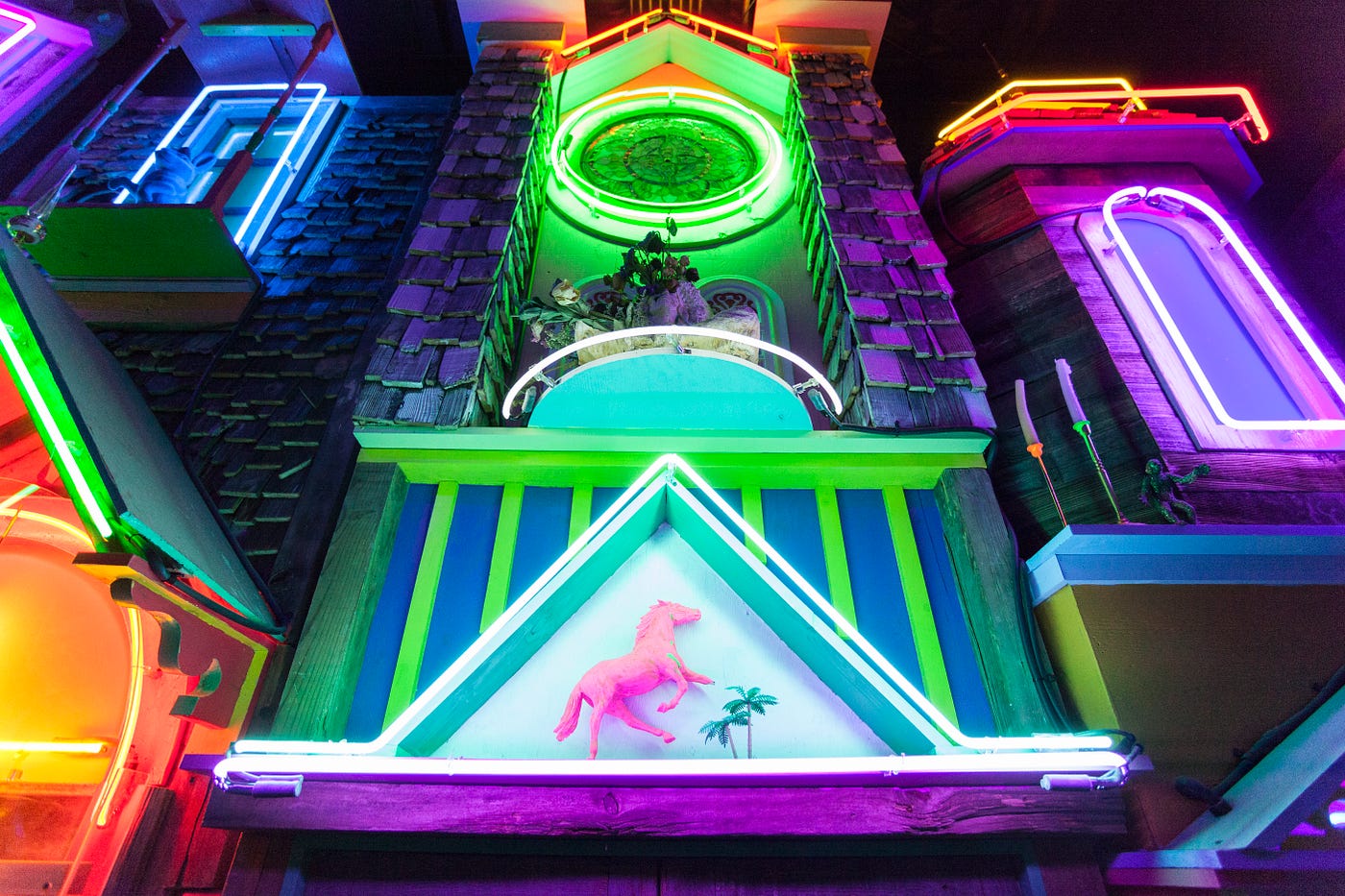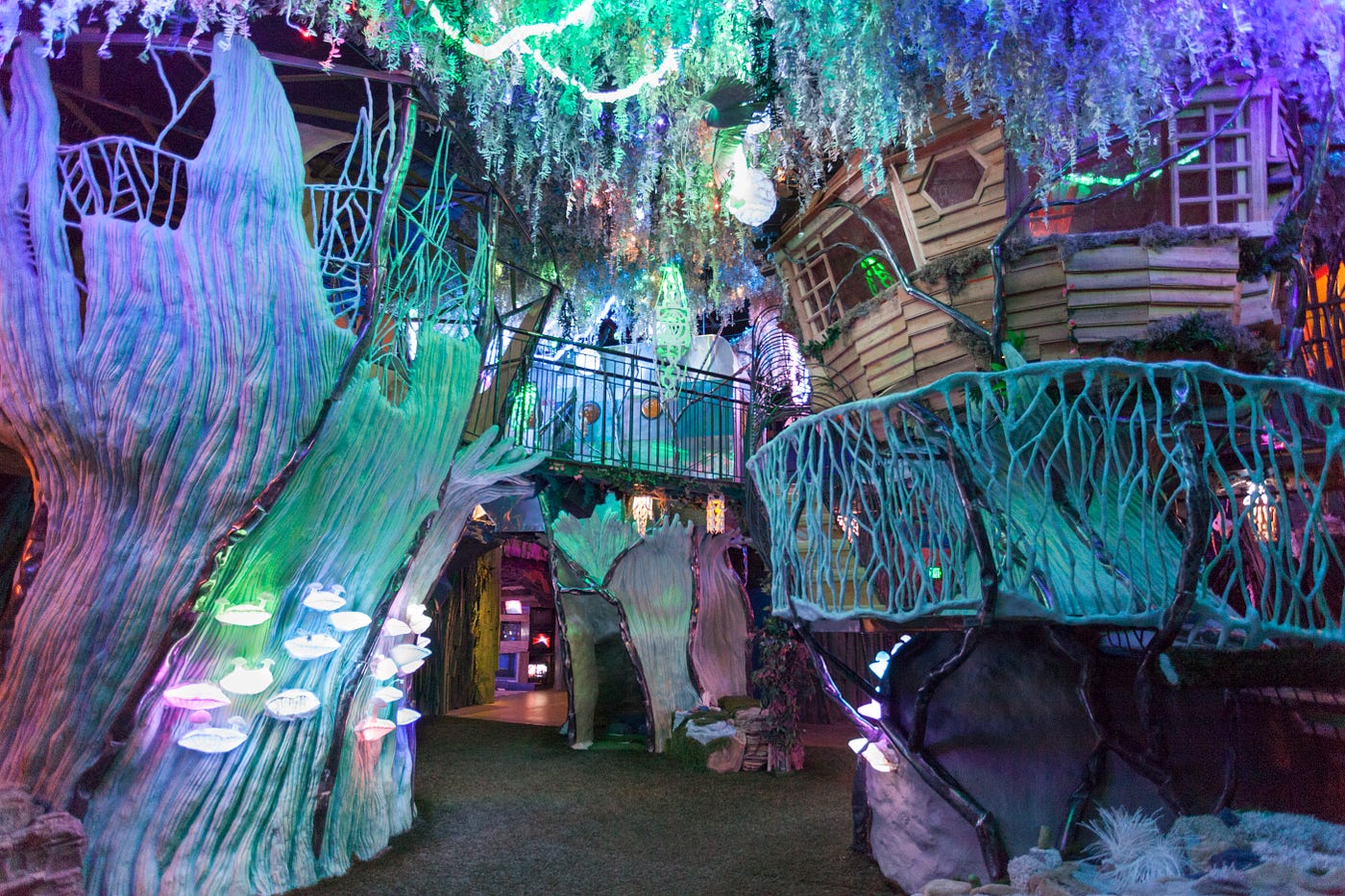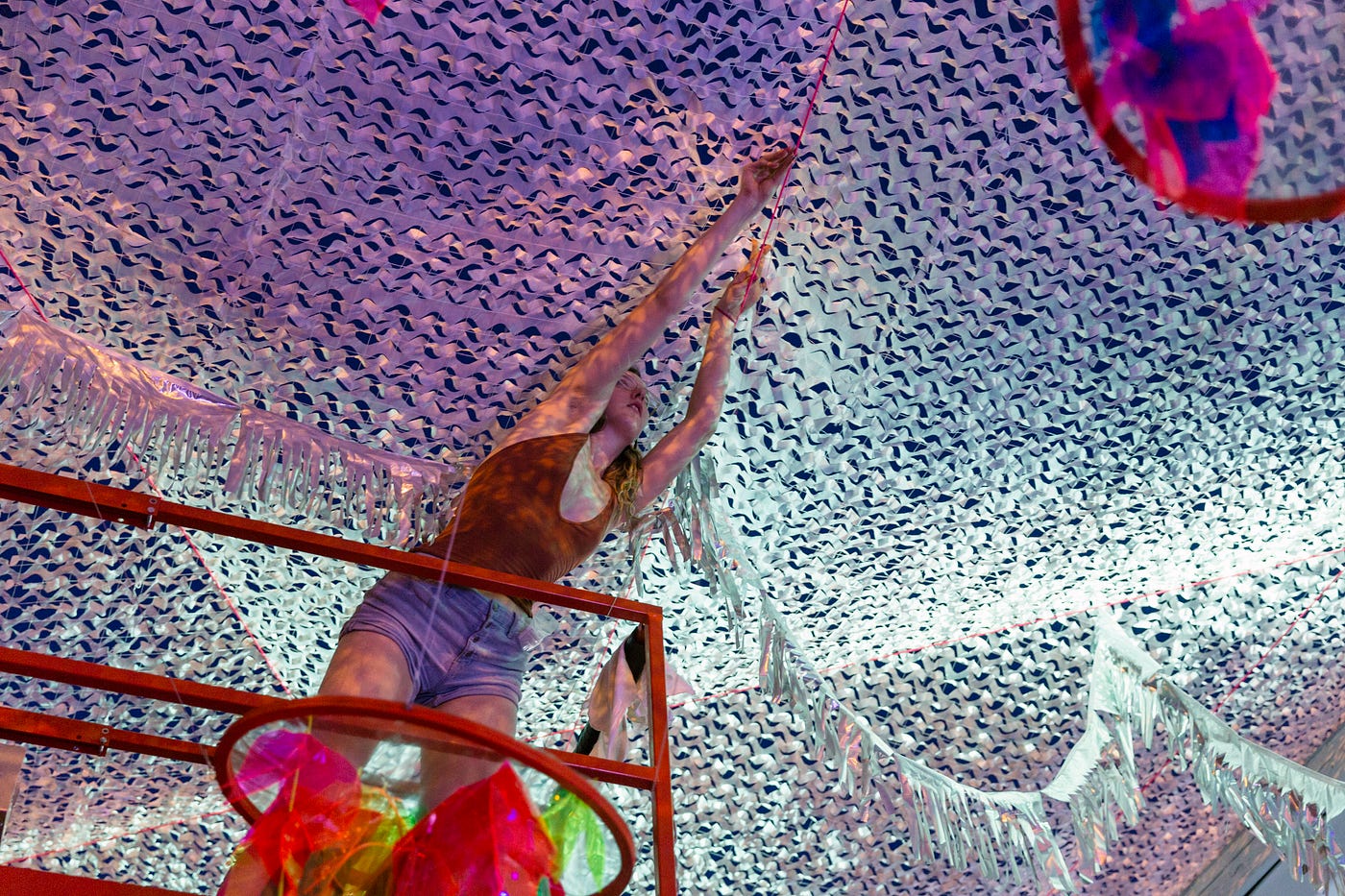
Meow Wolf is two things, as explained by its members: It is an artists’ collective that produces large scale immersive works born from a punk rejection of normal, mainstream, or high brow art; and a massive, amorphous beast, probably pink, that exists in the ether, willed into existence by the artists themselves but now powerful enough in its own intangible right to demand ever more creative expenditure from that collective. There are animated sequences in Meow Wolf: Origin Story that depict this happening.
They are awesome.
The documentary was put together over the course of one year from more footage than anyone seems to have an accurate estimate of — over a decade’s worth of home movies and photographs from Meow Wolf’s members — by directors Morgan Capps and Jilann Spitzmiller. From these sprawling personal archives, supplemented with new interviews, they have crafted a story of a bunch of young, disenfranchised artists (weirdos, reveling in their weirdness) throwing literally anything they could get their hands on at the wall and seeing what would stick, and supergluing what wouldn’t, facing the ultimate struggle all punks do: does successfully producing art in a sustainable way require selling out?
Video from the premiere Q&A by Cara Mandel
If you think of the rave kids you knew in high school and college, that’s a good approximation of the proto-Meow Wolfers. Throwing sprawling, messy art parties in dilapidated buildings, making delightfully bizarre and disjointed video vignettes that might remind you of the most avante garde MTV in the ’90s, and being fiercely dedicated to a policy of “radical inclusivity” — which meant an open door policy for their space, letting anyone in to create anything they wanted — was a blast, one that fostered unbridled creativity and allowed for a community of artists to exist in Santa Fe outside of its lucrative, conventional gallery scene. As the work gained focus, it codified just enough to come up with a name, through the time honored method of picking random words from a hat and mashing them together. Hence: Meow Wolf. At this fledgling point, the mission was to shake up the status quo and reject the limitations and gatekeeping of the fine art community, and Meow Wolf was very good at it. Eventually, that talent translates into quantifiable success.

Much of the footage is frenetic and sped up, sometimes a little disorienting. This is probably intentional. It certainly conveys the wild abandon of youthful creativity exploding across every available surface. Intercut with animated sequences — sometimes slow, abstract, almost lyrical slides of color across the screen, other times narrative cartoons in myriad styles recreating scenes from people’s lives or chronicling the growth of the amorphous beast itself in space — and marked by chapter titles that take the form of an unknown admin logging into a restricted server. In that framing, the doc is something of a Meow Wolf experience in and of itself.
Get Amanda Schuckman’s stories in your inbox
Join Medium for free to get updates from this writer.
SubscribeSubscribe
As you get to know the members of Meow Wolf, you become more invested not only in their success as a group and growth as an entity but in their relationships with each other. Being so dedicated to producing art that is next to impossible to commodify (so it seems, at least, for the longest time) results in a lot of stress and a lot of burnout. People walk away and come back years later. Meow Wolf grows and shrinks, but is ultimately presented as a family, one that wars within its own ranks as well as against the norms of the art world, fighting against but trying to accept the necessary aspects of order — hierarchy, curation both of work and staff, budget — while staying true to the core of its chaotic, anarchic culture.

Witnessing the growth and evolution of Meow Wolf as it plans and executes increasingly massive works against increasingly daunting odds winds up being a thrilling second hand experience. By the time George R. R. Martin enters the scene to become Meow Wolf’s benefactor, you’ve been through a lot with the collective, including tremendous success and crushing loss, and even knowing that their permanent installation exists and is doing very well the directors succeed in making you anxious as hell about whether or not the gargantuan task ahead of Meow Wolf can actually be done.
It can. They did it. Now they’re setting their sights on spaces in other cities that dwarf the Santa Fe experience. Denver and Las Vegas are next. Austin is on the horizon.
The amorphous beast hungers and it grows, and for Meow Wolf this is both frightening in scope and thrilling in the potential change it can bring, not just for them but for artists everywhere. In a world where creativity is a commodity but creatives are constantly undervalued, Meow Wolf’s mission is to become a massive force for the creative good: a facilitator of new work, a company that keeps its artists on salary instead of hiring and firing them as an individual project dictates. The documentary leaves you with the distinct impression not only that they can make this happen, but that they’ll do it without selling out. Meow Wolf will Meow Wolf until it takes over the world.
Meow Wolf: Origin Story premiered at the SXSW Film Festival in Austin, Texas.
No Proscenium is a labor of love made possible by our generous Patreon backers: join them today!
In addition to the No Proscenium web site, our podcast, and our newsletters, you can find NoPro on Twitter, Facebook, YouTube, Instagram, in our Facebook community Everything Immersive, and on our Slack forum.


















Discussion